We want to do the last stages of the Camino de Santiago and know some places in the city. For this we propose to friends and acquaintances to be encouraged to carry out the stages that go from Arzúa to Santiago, two stages that lead to having to spend the night somewhere along the way.
Raised the activity, 6 people participate in it.
Day 1
We will travel from Oleiros to Arzúa in companion vehicles. Using public transport is very complicated, there is only one bus service that will take a winding route and needs 2 hours and 40 minutes to travel 62 kilometers. That is why we resort to colleagues from the center and / or family to transfer us to the starting point of the first stage in their vehicles. Luckily, two colleagues volunteered to take us. 62 kilometers and one hour trip. The cost of this trip will be about 8 euros per vehicle. The departure time will be 10:00.
We will need to wear appropriate clothing and footwear for the activity as well as drink and food to replenish energy along the way, we will also need clothes to change once each of the stages is finished.
It is recommended to use garments made of synthetic fabrics such as polyester, as they are lighter, more comfortable, dry quickly and avoid chafing. Avoid cotton garments, which take a long time to dry and cause a greater perspiration than other fabrics. If possible, wear technical sportswear. It is also advisable to use a medium microfiber towel that is easy to dry, and seamless breathable anti-blister socks, which will save you time and space in your backpack. The underwear should not be adjusted or with delicate seams such as lace, to avoid sores. Use a good bra without hoops or seams, if possible sports, with wide straps.
As for footwear, it is advisable to avoid the boots of high mountain cane because of their weigh
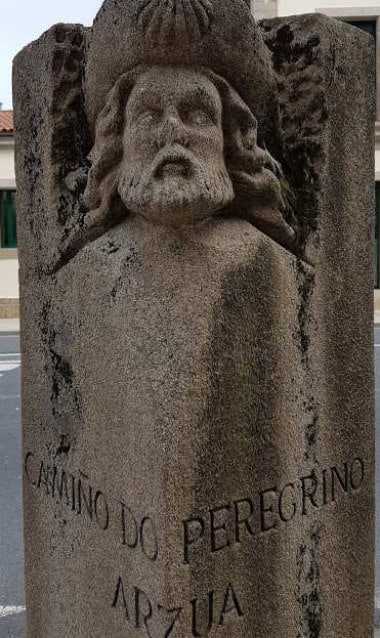
t and because they will cause chafing in the ankles. Medium or low boots with a semi-rigid sole, trekking shoes or simply sneakers are indicated. It is essential that the shoes that are going to be worn on the road are not new and unused, because this will cause blisters, chafing and swelling and widening of the feet, which will be very annoying from the first day. To avoid this inconvenience, the footwear to be used must have accommodated the foot with at least two weeks prior to making the Camino. It should also be considered that the footwear should not be too fair, since due to heat and physical exercise, the foot will widen, and also since on the descents the foot is tapping, which increases the risk of blisters.
It is 11:30, from Arzúa to Santiago there is a distance of 40 kilometers, so we will travel in two stages, stopping at O Pedrouzo. This section does not stand out for having any singular difficulty. We can travel it in approximately 4 hours. The stage takes place mostly on dirt tracks, with some sections leading to secondary roads, on a hike with plains and affordable climbs. The Camino leaves from Arzúa for 6 kilometers towards the town hall of O Pino, alternating villages and mountains of pines and eucalyptus. The path is well signposted and accompanied by bars and services for pilgrims. Small towns like Calle or Salceda mark the middle of the stage.

Santa Irene we have hostels, in Rúa we will find Bars, Pensions and Rural Houses in which to stay and in O Pedrouzo, all the services. The last 2 kilometers from Rúa to O Pedrouzo walk on the N-547 asphalt, which breaks with the usual and comforting rural roads.
Gastronomy stage Arzúa – O Pedrouzo
We will regain strength in O Pino at the Mesón A’Esquipa Meat forms the basis of most recommendations, not forgetting the octopus.
Servings of chorizo, raxo, zorza, orella and lacón. They are abundant dishes and ideal to
share.
Pork or veal.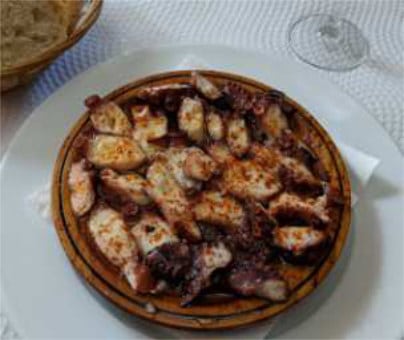 Cheese of the place,
Cheese of the place,
Santiago cake, all washed
down with
wines of the region.
Depending on the chosen
menu we will spend
between 11 and 15 euros
each of us.
We will continue the road until we reach O Pedrouzo, where we will spend the night at the O Burgo Hostel. The accommodation will cost € 12 per person. We will have dinner at one of the local restaurants, for example: Bar O Pedrouzo, Barbecue Pulperia Stop.
Day 2
After breakfast we return to the road, now yes, to Santiago. The stage can take us about four hours, so we decided to start it at 9:00.

Km. 0 O Pedrouzo; Km. 4 Cimadevilla; Km 9,5 Lavacolla; Km 15,1 Monte do Gozo; Rúa dos Concheiros; Rúa de San Pedro; Puerta do Camiño; Rúa das Casas Reais; Praza de Cervantes; Rúa da Acibachería; Praza do Obradoiro; Km 19.8 Santiago de Compostela.
END OF THE ROAD
Once in Santiago we will stop at the Plaza del Obradoiro to contemplate the Cathedral and feel the atmosphere among the pilgrims who are in it. However, the time to regain strength is approaching and for that in Santiago what is not lacking are establishments where you can replace them, in our case we will do it in a very busy place “Casa Manolo” located in the Plaza de Cervantes, but not before visiting the second place with more visits to the city, the Food Market.
Santiago Food Market
The second most visited place in the city after the Cathedral, the Mercado de Abastos is a place to buy and admire its architecture and tour the stalls of mollusks, fish, meat, cheese and vegetables fresh from the sea and the garden.

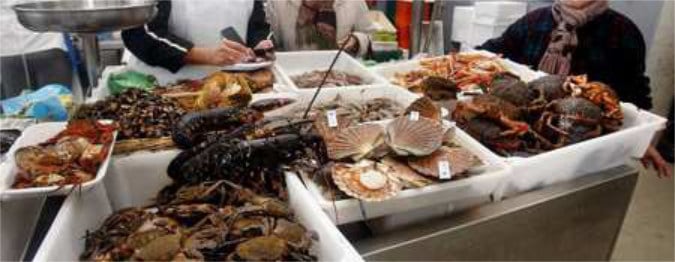
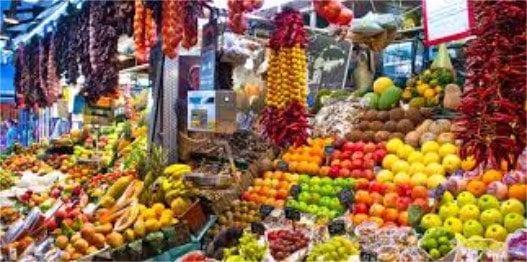
After opening our mouth at the Mercado de Abastos, we walk to the Plaza de Cervantes where “Casa Manolo” awaits us
Cervantes Square
The Plaza de Cervantes was known in the twelfth century as the «Forum», for being a popular meeting point and the place where the preacher read the municipal agreements and ordinances of the Archbishop. For this informative vocation, one of its streets, of important commercial activity, is called “del Pregtoiro”. It is on the corner of the building built in 1682 for the old Town Hall, which occupied the site for 200 years, from 1583 until its transfer in 1787 to the Raxoi Palace. Today it is the only baroque municipal building that remains intact in Galicia. An interior restoration has allowed the identification of the old scribes, the oratory, the archive and the dungeons: it is known that faith cars were made in the square during the Inquisition and that the roll or column around it was located until 1570 to which justice was imparted and at whose foot the gallows were located. The column came from presiding executions on the Mount of the Almáciga and passed to the Carballeira de Santa Susana, where it disappeared in the 19th century.
Subsequently, by specializing in the sale of food and merchandise, the space acquired the name of “Plaza del Campo” and the main market category. This also explains the name of the church of San Bieito do Campo, whose current neoclassical lines do not suggest that the foundation dates back to the 10th century.
Moved the market to the Plaza de Abastos in the late nineteenth century, the square acquired the final name of Cervantes. A bust of the writer crowns the source and reminds us that the author of “Don Quijote” was the bearer of two surnames of Galician origin: Cervantes and Saavedra.
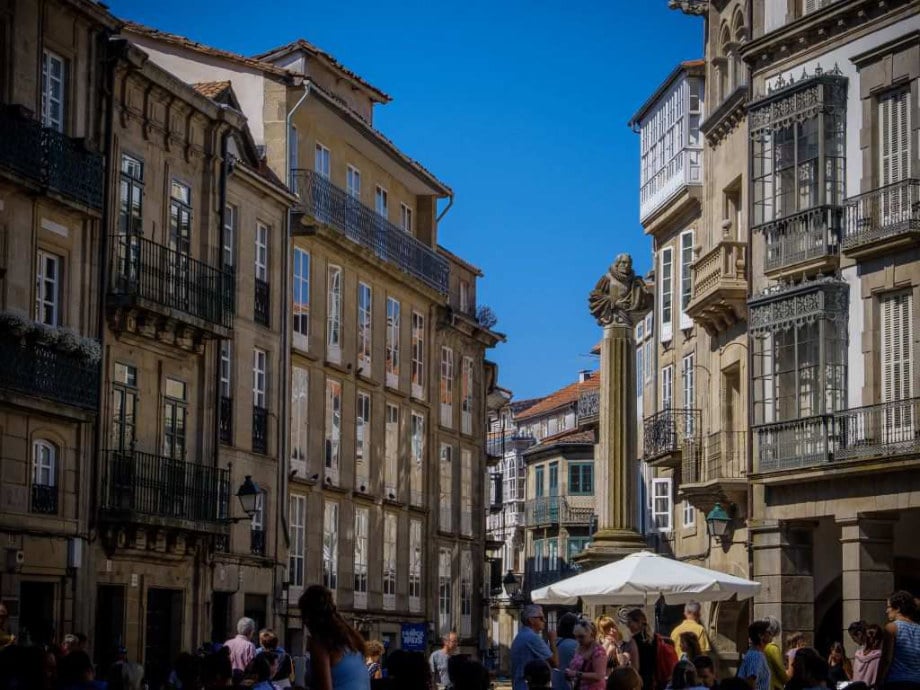
One afternoon in Santiago de Compostela goes a long way, we will make a Monumental and Panoramic Route with the most recognized places in the city.
Praza do Obradoiro
The Praza do Obradoiro we can say that it is the main square of Santiago de Compostela. In it we find the Cathedral of Santiago, the Hostal de Los Reyes Católicos (Parador de Turismo), the building of the City Hall of Santiago and the Xunta de Galicia (Raxoi Palace) and on the other side of the square the seat of the rectory of the University of Santiago de Compostela (palace of San Xerome).
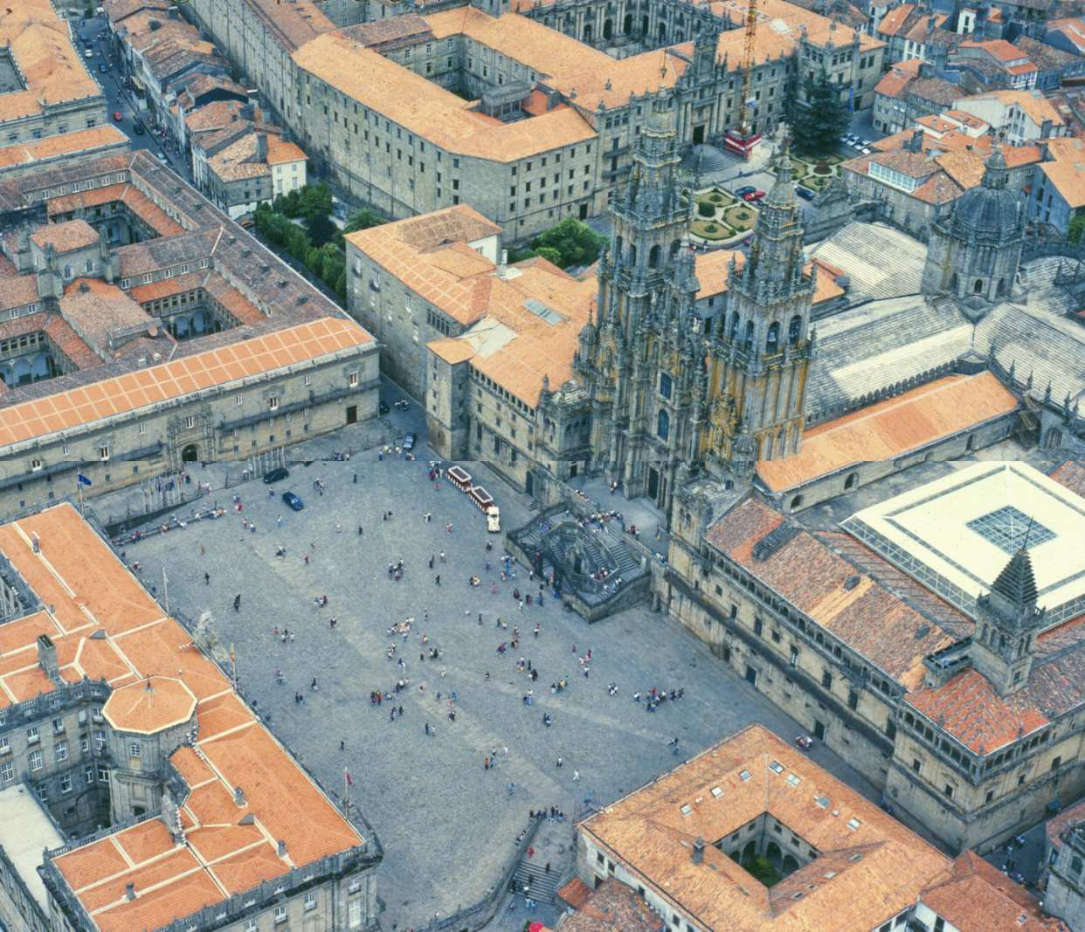
After appreciating (and photographing) the buildings that surround the square we enter the Cathedral of Santiago de Compostela and we will do it through the access of the Obradoiro square itself where, as soon as we enter we will find the great work of Master Mateo, the Porch of Glory.
Cathedral of Santiago de Compostela
The Cathedral of Santiago, the great work of maestro Mateo
In the place where it was found, in 813, the tomb of the apostle Santiago began to rise in the eleventh century a magnificent cathedral. A great artist, Maestro Mateo, would sculpt a masterpiece of Spanish Romanesque art: the portico de la Gloria
It was 813 when a hermit named Pelayo saw a prodigious shower of stars over the Libredón forest, near Iria Flavia, home of the main Catholic bishopric in Galicia. After communicating it to Bishop Teodomiro, they headed towards the place and contemplated together a strong glow, which came from a stone sepulcher where three bodies rested. They were immediately identified: they were James the Elder and his disciples Theodore and Athanasius. It was the definitive confirmation of a tradition according to which James, the apostle of Christ, had preached in Hispania and was also miraculously buried there, after his disciples collected his martyred body in Jaffa and transferred him by boat to lands of Hispania. In reality, this belief had spread mainly in the eighth century, in the midst of invasion of the Peninsula by Muslims, as a way to encourage the resistance of Christians. The discovery of the sepulcher only increased the enthusiasm. King Alfonso II was informed immediately and soon the news, announced by Pope Leo III himself, ran like wildfire through every corner of the Christian world.
The facade of Obradoiro

The construction of the cathedral of Santiago de Compostela began in 1075 and underwent numerous renovations over time. The Obradoiro facade, in the image, was made by Casas Novoa in the 18th century.
https://www.nationalgeographic.com.es/historia/grandes-reportajes/la-catedral-de- santiago_7200/6
Pórtico de la Gloria
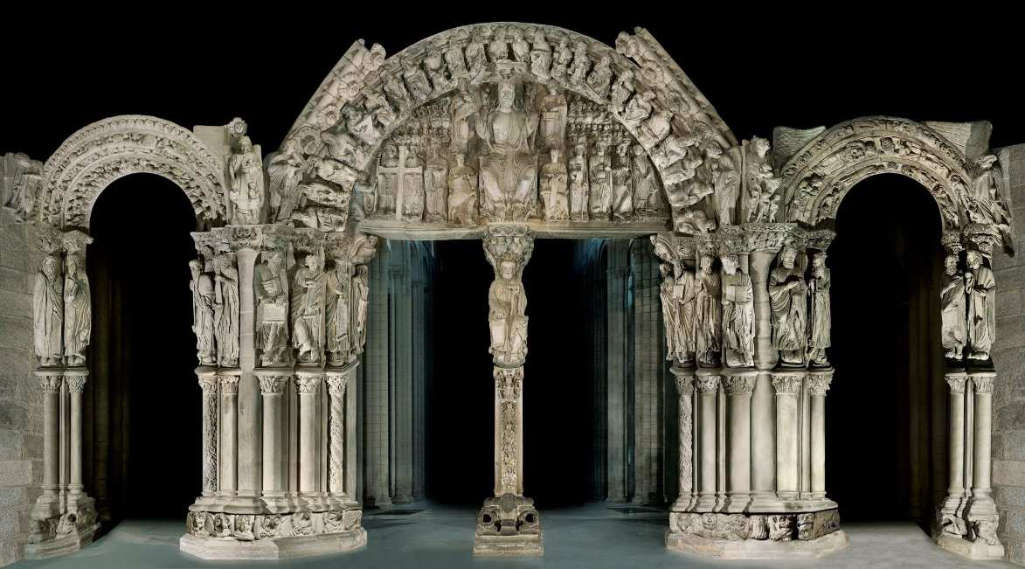
The porch that covers the cover of the cathedral and the subsequent baroque facade prevent having a frontal and overall view of the Portico de la Gloria. The reproduced photograph is, therefore, an exceptional image. It is the result of a series of partial shots, made in long night sessions and then composed to form a spectacular panoramic image.
El Botafumeiro
The Botafumeiro is the huge censer used since the Middle Ages as an instrument of purification of a cathedral in which crowds crowded together. Today, 800 years later, it continues to amaze those present when, after the Communion, the Apostle’s Hymn sounds in the baroque organs and this portento of physics begins its amazing pendular path in front of the main altar, to rise until almost touching the vault of the transept.
The operation of the «botafumeiro» can be followed in the following link.
Once we have traveled inside the Cathedral we will leave the temple through the door of the
Platerias Square

The southern square of the Cathedral, which owes its name to the goldsmiths’ workshops located since the Middle Ages in the basement of the cloister, is dominated by the only Romanesque facade that the Cathedral preserves. It dates from 1078 or 1103 and was severely damaged during popular uprisings against Archbishop Gelmírez, in the second decade of the 12th century, so it was rebuilt a few years later.
Once the corresponding photographs have been taken, on the access stairway to the Cathedral and at the fountain, which occupies the central part of the square, called Fonte dos Cabalos, we will walk along the Rúa do Vilar towards the Toural square.
The Rúa do Vilar, together with the Rúa do Franco and the Rúa Nova, forms the trilogy of the most important streets in the monumental area of Compostela. In the Rúa do Vilar there are also buildings of the importance of the Casa del Deán, the Pazo de Vaamonde House or the Gonzalo Torrente Ballester Foundation. Another of the outstanding properties is the Café Casino (opened since 1873).
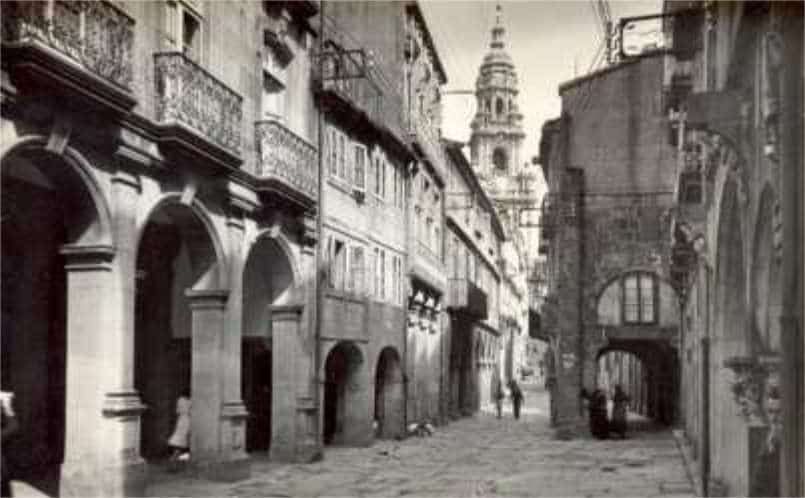
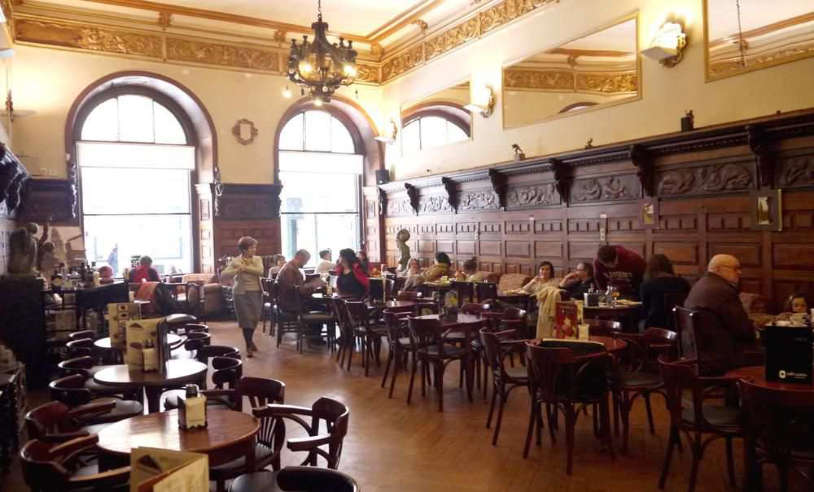
After walking the Rúa do Vilar we arrive at Praza do Toural.
Praza do Toural, the source of the damned and the Pazo de Bendaña
The Rúa Nova and the Rúa do Vilar flow into this square, although it can also be accessed from the Plaza de Galicia by the old Porta da Mámoa
In the center of the Plaza, there is a fountain that, as it can not be otherwise, also has its small legend, and that is that the fountain, which was built around 1820, after nothing more and nothing less than about 300 years since its first request by the people to the municipal authorities.
The delay in its construction was motivated by the simple reason that there was no water canalization to that area, since the Holy Inquisition that owned land nearby was moved in 1716 to the Casa Grande do Hórreo or de Calo, (located in the former Porta da Mámoa)
Thus, in the inquisitive properties … the water channel was collected … and from there … because it no longer reached other places in the environment.
Until the disappearance of the Inquisitors and the collapse of their properties could not channel the water to the Plaza do Toural, and give life to its source.
The story is still heard from time to time in Santiago that says that the water that feeds that source «is what the condemned by the courts of the Holy Inquisition drank».
Pazo de Bendaña
The most prominent building in the Plaza is the Pazo de Bendaña, former property of the Marquises of the same name.
This building, built in the 18th century, is attributed to Clemente Sarela and today houses the headquarters of the Foundation – Museo Eugenio Granell.
En lo alto, una imagen de Atlas, aguanta o sostiene sobre su espalda una gran esfera que representa su misión de sujetar el Mundo
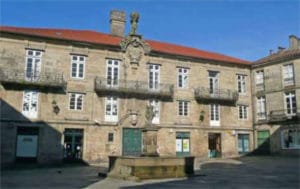
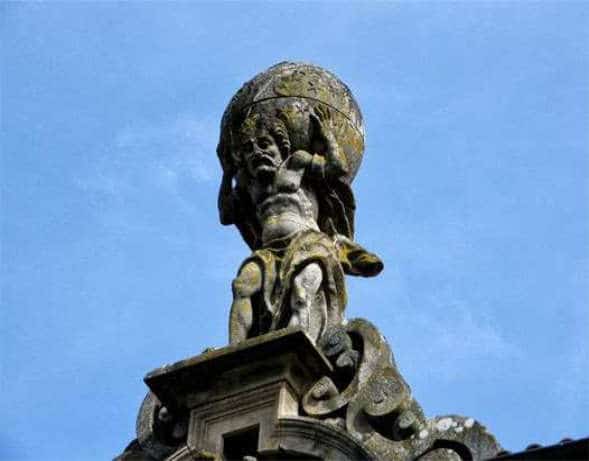
Tiredness shows in our faces, our partners wait for us to return to Oleiros

